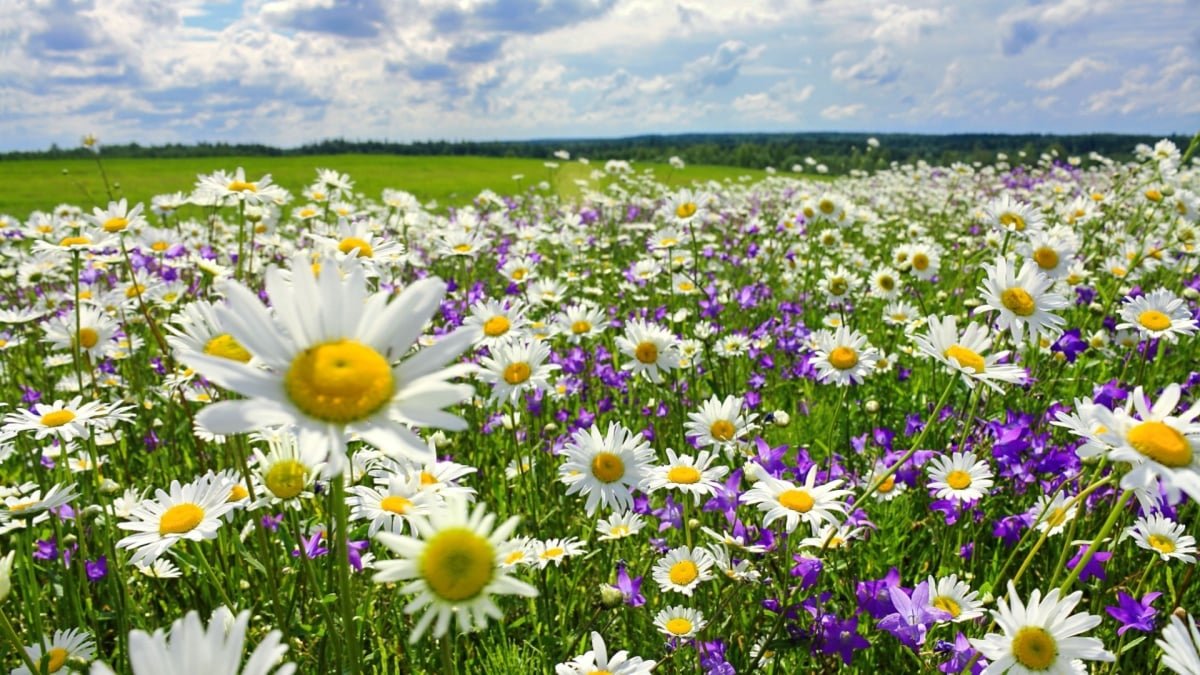
We might earn a fee from hyperlinks on this web page.
Lawns, mowed brief, give us house for canine and youngsters to play. In addition they hold our neighbors from making complaints to the city authorities or householders’ affiliation. However a closely-cropped garden is a flower-free monoculture. Some organizations are encouraging a “No Mow Might” to permit wildflowers within the grass to bloom—benefiting pollinators—earlier than we begin chopping grass down for the season.
There’s an enormous caveat value noting right here: Ecological organizations say that No Mow Might doesn’t do a lot for pollinators if all you do is let your grass develop for a month after which get again to your ordinary garden care. (It could possibly even be unhealthy on your grass.) As an alternative, take into account how one can assist pollinators in your yard with different approaches, like a “gradual mow summer season.”
What’s No Mow Might?
Originated by Plantlife within the UK, No Mow Might is described as a motion that goals to “Present a feast for pollinators, deal with air pollution, scale back city warmth extremes, and lock away atmospheric carbon under floor.”
Plantlife asks individuals to pledge to not mow their garden throughout Might, they usually encourage contributors to debate plant range with their neighbors and on social media. Lawns have taken over areas that had been as soon as meadow, leaving pollinators with fewer flowers to feed on. Individuals ought to actually be cultivating gardens and meadows, not just lawns, the argument goes. No Mow Might is a step towards that.
Is it really good to cease mowing your grass in Might?
In response to most U.S.-based conservation organizations: no. The Xerces Society for Invertebrate Conservation writes in a blog: “Let’s be sincere, if all you’re doing is letting dandelions and different weeds bloom, that’s not good high quality [pollinator] habitat—and any advantages shall be canceled when you energy up your mower and restart as if nothing has modified as soon as June arrives. We are able to’t pat ourselves on the again and say, ‘Yay, we saved the bees.’”
The Bee Lab on the College of Minnesota agrees: “Individuals mustn’t take the catch phrase ‘No Mow Might’ actually.”
Minimal environmental advantages apart, No Mow Might can probably hurt your grass. Lawns are healthiest when you only trim off some of their height, so that you don’t need to let your grass get a foot tall after which chop it all the way down to nothing. (That end-of-Might reduce isn’t good on your mower, both.)
What to do as a substitute of No Mow Might
Conservation organizations recognize the sentiment of No Mow Might, however choose that we channel our vitality into extra holistic approaches like a Gradual Mow Spring or Gradual Mow Summer season, extending the mission of No Mow Might throughout a complete season.
Listed below are a few issues that may assist your yard to offer extra meals for pollinators, and extra helpful habitat for different residing issues like birds:
-
Mow much less typically all through the season, and use a better blade peak in your mower. Longer grass retains the soil moist, and the taller mowing peak permits small flowers to bloom.
-
Plant native and helpful flowers in your garden, like clover, selfheal, and violets.
-
Develop a mini-meadow or wildflower backyard that’s separate out of your garden.
-
Develop different pollinator-friendly crops moreover simply those that develop in grass. Shrubs, backyard crops, and window bins can all contribute.
The Bee Lab additionally factors out that careful timing of mowing can help, relying on what grows in your yard. For instance, you’ll be able to permit weeds like dandelions to flower, after which mow them earlier than they go to seed. That permits pollinators to go to the flowers, however stops these specific weeds from spreading.
Trending Merchandise










